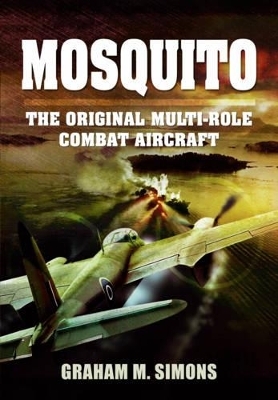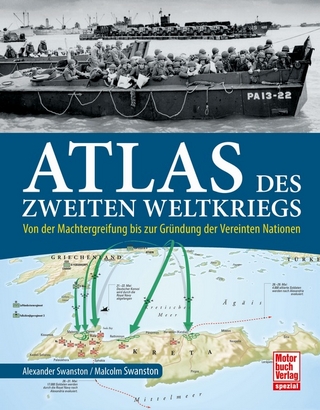
Mosquito: The Original Multi-Role Combat Aircraft
Seiten
2015
Pen & Sword Aviation (Verlag)
978-1-78340-071-3 (ISBN)
Pen & Sword Aviation (Verlag)
978-1-78340-071-3 (ISBN)
Contains hundreds of photos of the Mosquito production line and design concepts. Appendices include first hand pilot accounts, details of the unique variants put into production, and information relating to the Mosquito's deployment in a civilian context with BOAC.
During the course of aviation history, there have been very few aircraft that have achieved immediate success when entering front-line service. The arrival of the de Havilland Mosquito brought with it a degree of instant success that set it apart from a host of other aircraft. It was not designed to an RAF requirement, but was the result of an initiative of the designers and builders to utilize the skills of woodworkers and the relative abundance of wood in the crisis years of World War II. The result was an aircraft that could be built quickly, was extremely fast and immensely versatile. Pilots loved it and the opportunities opened up to them as a result of the capabilities of this new and exciting aircraft. Here, Graham Simons describes in detail how the de Havilland Mosquito was built, utilizing many rare photographs from the design studio and production lines. It illustrates and explains the many different roles that the aircraft took as the war progressed. Fighter, bomber, reconnaissance, night fighter - there were few tasks that this brilliant design could not adopt.
During the course of aviation history, there have been very few aircraft that have achieved immediate success when entering front-line service. The arrival of the de Havilland Mosquito brought with it a degree of instant success that set it apart from a host of other aircraft. It was not designed to an RAF requirement, but was the result of an initiative of the designers and builders to utilize the skills of woodworkers and the relative abundance of wood in the crisis years of World War II. The result was an aircraft that could be built quickly, was extremely fast and immensely versatile. Pilots loved it and the opportunities opened up to them as a result of the capabilities of this new and exciting aircraft. Here, Graham Simons describes in detail how the de Havilland Mosquito was built, utilizing many rare photographs from the design studio and production lines. It illustrates and explains the many different roles that the aircraft took as the war progressed. Fighter, bomber, reconnaissance, night fighter - there were few tasks that this brilliant design could not adopt.
Graham Simons is a highly respected aviation historian and author. He has penned a host of Pen and Sword titles focussing on aviation themes, including; London's Airports: Useful information on Heathrow, Gatwick, Luton, Stansted and City (2011), Mosquito: The Original Multi-Role Combat Aircraft (2011); B-29: Superfortress: Giant Bomber of World War 2 and Korea (2012) Northrop Flying Wings (2013) and Howard Hughes and the Spruce Goose: The Story of the HK-1 Hercules (2014). He lives near Peterborough.
| Erscheint lt. Verlag | 1.10.2015 |
|---|---|
| Zusatzinfo | Approx 480 mono within text |
| Verlagsort | South Yorkshire |
| Sprache | englisch |
| Maße | 156 x 234 mm |
| Themenwelt | Natur / Technik ► Fahrzeuge / Flugzeuge / Schiffe ► Militärfahrzeuge / -flugzeuge / -schiffe |
| Geschichte ► Allgemeine Geschichte ► 1918 bis 1945 | |
| Geisteswissenschaften ► Geschichte ► Regional- / Ländergeschichte | |
| Geschichte ► Teilgebiete der Geschichte ► Militärgeschichte | |
| Sozialwissenschaften ► Politik / Verwaltung | |
| ISBN-10 | 1-78340-071-4 / 1783400714 |
| ISBN-13 | 978-1-78340-071-3 / 9781783400713 |
| Zustand | Neuware |
| Haben Sie eine Frage zum Produkt? |
Mehr entdecken
aus dem Bereich
aus dem Bereich
von der Machtergreifung bis zur Gründung der Vereinten Nationen
Buch | Softcover (2023)
Motorbuch Verlag
24,90 €


